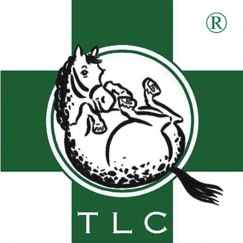 |
The Laminitis
Clinic
|
|
EFFICACY
OF TRILOSTANE IN THE MANAGEMENT OF EQUINE CUSHING'S DISEASE.
C.M. McGowan
and R. Neiger. Trilostane (Stegram Pharmaceuticals, UK), a 3beta-hydroxysteroid dehydrogenase inhibitor, acts to block adrenal steroidogenesis. The aim of this study was to assess the efficacy of trilostane in twenty horses (mean age 21, SD 5.7 years) diagnosed with equine Cushing's disease using the combined dexamethasone suppression thyrotropin releasing hormone (TRH) stimulation test (17 horses) or TRH stimulation test (3 horses). Serum samples for cortisol analysis were collected via indwelling catheter at baseline, at 210 minutes (30 min after 1 mg i.v. TRH) and 22 hours after 40 mcg/kg dexamethasone i.m. Affected horses were treated with 0.4 to 1 mg/kg (mean 0.5 mg/kg) trilostane administered once daily in feed for a period of 30 days. After 30 days endocrine testing was repeated. Serum cortisol before and after treatment was compared by paired t-test. Polyuria and/or polydipsia, present in 11 horses, was reduced in all after treatment. Lethargy was present to some degree in 19 horses, but improvement in demeanour was evident in all horses after therapy. Recurrent, chronic or persistent laminitis, present in 17 horses, improved or showed no recurrence in 14 cases. Six horses had phenylbutazone therapy discontinued during the trial due to improvement in lameness attributed to laminitis and 1 horse had phenylbutazone therapy reduced from 2 g to 1 g daily. Three horses showed severe, acute laminitis on presentation, with rotation and sinking evident on radiographs, which did not respond to trilostane. One of these horses was euthanised 14 days into the trial. One horse developed a mild bout of laminitis during the trial (Obel grade 1), but was sound by the time he was re-presented at 30 days. While baseline cortisol (mean: 141, SD 54 nmol/l) and 22 hours post dexamethasone cortisol (mean: 109, SD 34 nmol/l) in horses before treatment were not significantly different to post treatment [baseline (mean: 159, SD 64 nmol/l), post dexamethasone (mean: 104, SD 48 nmol/l)], there was a significant reduction (p =0.023) of cortisol following TRH administration before (mean: 176, SD 52 nmol/l) and after (mean: 147, SD 61 nmol/l) trilostane. In conclusion, trilostane caused an improvement in clinical signs in all horses, the most consistent being an improvement in demeanour and a corresponding decrease in cortisol response to TRH administration. Thus trilostane is a useful therapy for the treatment of equine Cushing's disease, particularly with respect to improving the quality of life of affected animals. Safety and long term effect is being investigated for a further period of 12 months. McGowan, C & Neiger,
R. (2003) |
|
The Laminitis
Clinic Helpline telephone number 0905-105-1051 (from within the UK only)
Line open Monday to Friday 10am to 4pm. Calls cost £1 per minute |